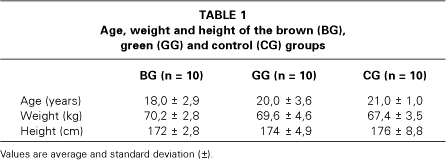Judo is a sport in which the athlete must have an efficient balance control, as he or she is constantly vulnerable to unexpected movements imposed by the opponents. The aim of this study is to analyze judoist postural responses to an unexpected external perturbation (n = 20) in two levels of ability (brown and green belts) and in those of a non-athlete group (n = 10). An external posterior perturbation (EPP) was applied by means of a horizontal traction to the subject's dorsum, using a fixed pulley system. The EPP was unexpectedly and quickly removed, producing the desired postural response. Displacements of centre of pressure (COP) were obtained by means of a force platform. Postural responses were analyzed in eight intervals of 1 s (t1 to t8), beginning at the moment of EPP removal. The speed and position averages of COP, in anteroposterior plane, were the main parameters used to analyze the postural responses in the balance recovery. A two-factor (group x intervals) repeated measures analysis of variance (ANOVA) followed by Student Newman-Keuls post-hoc (p < 0.05) was applied for speed and COP. ANOVA for intervals factor in each group was applied to COP position, in order to verify COP displacement patterns. The group of greater ability presented lower COP speed compared with the control group, and a gradual and continuous COP displacement pattern during balance recovery. Our findings confirmed the hypothesis that the most skilled athletes present better balance control, and show that the proposed sport training and the athlete's level of ability may influence on this control performance.
Balance; Martial arts; Sports; Sensory-motor performance






